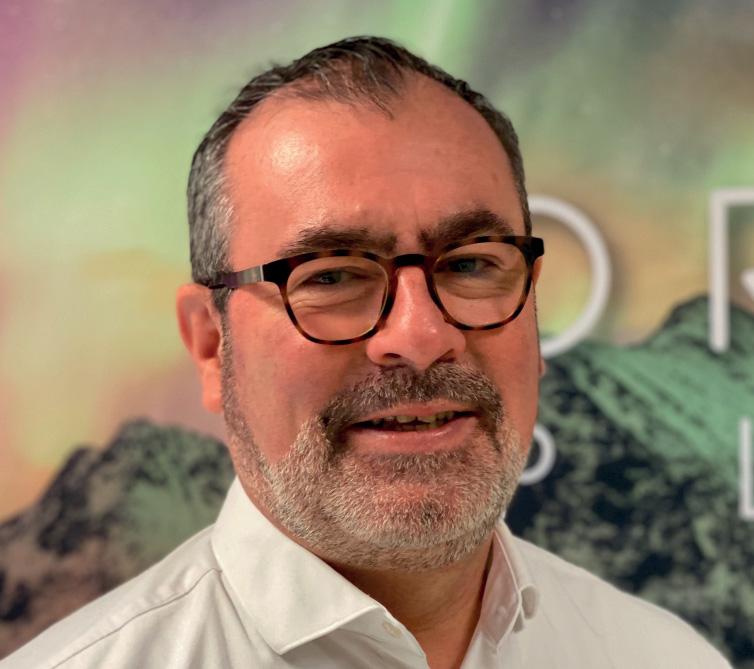
3 minute read
The journey is the destination
The former ceo of The Fjords, Rolf Andre Sandvik, plans to upend the northern European luxury cruise vessel market with a zero-emission luxury cruise concept, he explains to The Motorship
The underlying concept behind Sandvik’s new venture, Northern Xplorer, is that the next generation of high-end, climate-conscious travellers looking for more personalized, intimate travel will be attracted by luxurious experiences delivered with a minimal environmental footprint.
At the heart of the concept, Sandvik plans to operate up to 14 zero-emission vessels, capable of accommodating up to 300 passengers in 150 cabins, along with a crew of up to 100.
When asked why he had decided to promote such a mould-shattering design, Sandvik responded that “it had been my aim to prove that zero-emission was possible since we started The Fjords project with the Vision and Future of The Fjords and later Legacy of The Fjords battery-powered sightseeing boats coming into service.”
“When we signed a contract for the first ship in the Vision series, some of our technical engineers and, indeed, other shipbuilders, were a bit sceptical. But together with the shipyard, suppliers, class and the authorities we worked through the challenges and got it done, and the vessels have proved enormously popular offering emission-free trips in world-heritage scenery.”
Each of the Northern Xplorer vessels will measure up to 130 metres, with a beam of 22 metres. The vessels have been designed in close collaboration with ABB Marine & Ports, which previously collaborated with Sandvik on the Vision of the Fjords project.
The vessels have been designed by the west coast of Norway-based Multi Maritime AS, which as a relative newcomer to cruise vessel design, and has brought a fresh eye to every detail. While the process of obtaining classification society approval for the design was about to begin shortly, Sandvik noted that Multi Maritime had previous experience working with the Norwegian Maritime Authority (NMA) on other hydrogen-propelled designs.
While the vessels’ design is expected to challenge existing norms of how a cruise ferry should look, they are expected to make a virtue of slower operating speeds.
“We are turning [the existing model] upside down and cruising during daytime and doing short stops on the shores… and then coming into port at night or in the afternoon,” says Sandvik. Operating at zero emissions will lead to lower operating speeds “of around 10-12 knots”, although the vessels will be capable of reaching 17-18 knots when operating at full speed.
Interestingly, Sandvik notes that the slower operating speeds are also integral to the business model. “When it comes to energy consumption, we estimate that our operating costs will be under 10% of those of comparable ships, based on energy prices in Norway”.
HYDROGEN PROPULSION
The propulsion system incorporates hydrogen-fuelled PEM fuel cells, which will be supplied by compressed hydrogen stored in a specially designed containment system located in the hull. However, Sandvik notes that the size and specific type of PEM fuel cell is not likely to be finalised until shortly before the final order for the vessels is submitted.
Sandvik notes that the first vessel will also hopefully include an innovative test pilot for an onboard hydrogen electrolyser, which will allow renewable energy from the vessel’s energy sources to be converted into hydrogen, or to recharge the onboard energy storage system (ESS). The exact capacity of the ESS is still being refined.
The design also includes a photovoltaic system, as well as what Sandvik believes will be the first installation of grooves running along the side of the hull to capture wind energy. “The renewables element will not generate that much power at the beginning, but it's an exciting area to start a pilot and see what's feasible.”
The first vessel is expected to enter service by early 2025, shortly before zero emission regulations enter into effect in Norway’s heritage fjords in 2026.
The construction of each vessel in the series is expected to take around 24 months, and negotiations with potential shipyards is continuing. “It's very natural for us to explore options in Norway first, and then go to Europe. Chinese or Asian yards don’t yet have the same knowledge of zero-emission technologies, although I expect that to change in the future.”
Sandvik adds that he hopes to be able to take a collaborative approach towards sharing insights. “Cooperation between competitors is always for the best. That way we can develop new markets and new technology at less cost for everyone. Open innovation has always been and will continue to be my mantra.”
8 Rolf Andre Sandvik






